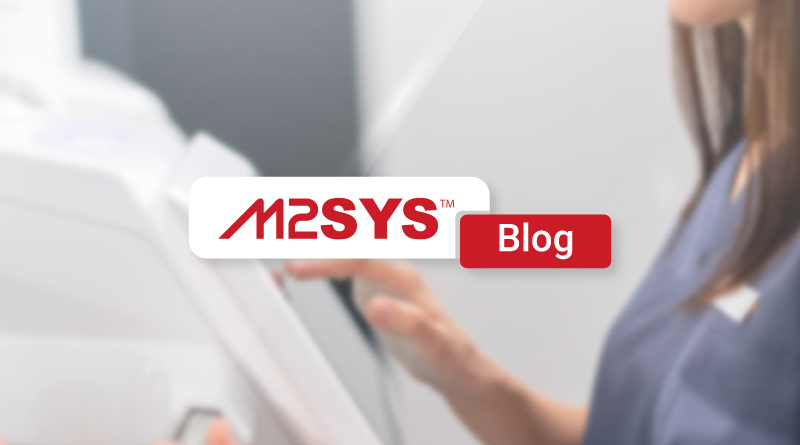How M2SYS eGovernment Solutions Enable Real-Time Data-Driven Fraud Prevention
Fraud in U.S. government benefits programs costs taxpayers an estimated $100 billion annually. Many agencies rely on outdated methods, causing delays in fraud detection. Real-time data integration offers a solution by enabling instant verification and reducing manual work, ultimately preventing fraudulent claims and saving taxpayer money.
Did you know that fraud in U.S. government benefits programs drains an estimated $100 billion annually from taxpayer funds? State and federal agencies battle this massive loss every day, especially with rising caseloads and complex eligibility rules. Yet, many still depend on outdated methods that slow down the fight against deceitful claims.
What Causes Delays in Fraud Detection for Government Benefits?
Agencies often rely on manual checks and isolated data systems. For instance, a claim might sit unverified for weeks because data from different departments does not sync quickly. This setup creates gaps where fraud slips through. Moreover, as caseloads grow, staff struggle to keep up, leading to more errors and overlooked red flags. In fact, a recent Government Accountability Office report highlighted how these delays cost agencies millions in preventable losses each year.
However, the core issue stems from outdated data flows. When information about claimants comes from scattered sources, verification takes too long. Agencies end up reacting to fraud after it happens, rather than stopping it in real time. This reactive approach not only increases financial drain but also erodes public trust in benefit programs.
Why Is Real-Time Data Integration Key to Preventing Fraud in Benefits Programs?
Real-time data integration changes the game by pulling together up-to-date population details instantly. Agencies can then cross-check claimant info against fresh demographic records without delay. For example, if a claim lists an address that does not match current census data, the system flags it right away. This method cuts down on manual work and speeds up decisions.
Additionally, integrating data from multiple agencies creates a fuller picture. No more waiting for batch updates that arrive too late. Instead, continuous syncing ensures accuracy. As a result, eligibility checks become faster and more reliable, reducing the chance of approving false claims.
How Do Disparate Data Sources Hinder Government Benefits Fraud Prevention?
Many agencies pull data from various departments, like health, housing, and employment. These sources often operate in silos, making it hard to share info seamlessly. Consequently, fraudsters exploit these disconnects by submitting inconsistent details across systems.
For instance, in one historical case from the early 2000s, a large-scale benefits scam in California went undetected for months due to poor data sharing between state and federal levels. Such examples show how fragmented systems invite abuse. Therefore, unifying these sources is essential to spot patterns of fraud early.
What Role Does Automation Play in Real-Time Fraud Prevention for Government Benefits?
Automation takes fraud detection to a new level by using smart tools to analyze data on the fly. Rather than sifting through claims by hand, systems can scan for anomalies automatically. This shift not only saves time but also boosts accuracy.
Moreover, with AI in the mix, patterns that humans might miss become clear. Agencies report up to 30% fewer fraudulent payouts when they adopt automated checks, according to industry trends from the past decade. So, moving away from manual processes directly tackles inefficiencies and cuts costs.
How Can Agencies Overcome Slow Data Synchronization in Benefits Fraud Prevention?
Slow synchronization often stems from legacy systems that update data in batches, sometimes daily or weekly. This lag leaves room for fraud during the gaps. To fix this, agencies need platforms that handle continuous updates securely.
By linking biometric and demographic info in one place, agencies gain instant access to reliable data. This approach has proven effective in global projects, like the national ID system in Turkey, where over 80 million citizens’ data integrated smoothly for secure verification. Such integrations demonstrate how real-time syncing strengthens fraud barriers.
Introducing M2SYS eGovernment Solutions for Real-Time Data-Driven Fraud Prevention
With over 20 years of working with governments worldwide and in the U.S., M2SYS eGov brings proven expertise to these challenges. The M2SYS eGovernment Solutions platform builds and delivers eGovernance tools that unify data for better fraud prevention in benefits programs.
Specifically, this platform connects biometric and demographic details securely, allowing agencies to verify claims against live population insights. For example, in U.S. correctional facilities, similar integrations have reduced identity fraud by ensuring consistent data across systems. Agencies using this setup see faster fraud flags and fewer manual reviews.
Furthermore, the platform supports AI tools that automate detection, addressing limited automation pain points. In projects like the public health initiatives in Haiti and Zambia, where over 1 million identification events improved data integrity, real-time integration showed clear gains in efficiency and accuracy.
What Are the Benefits of Real-Time Data Integration for Government Agencies?
Agencies gain quicker eligibility assessments, which means faster service for legitimate claimants. At the same time, financial losses drop as fraud gets caught early. Integrators and software vendors also benefit from easier connections to existing systems, smoothing out implementation.
In the U.S., trends show a 25% rise in agencies adopting real-time tools over the last five years, driven by escalating fraud attempts. By solving disparate data issues, these solutions help maintain program integrity without slowing operations.
Why Prioritize Real-Time Integration in Government Benefits Fraud Prevention Strategies?
Decision-makers face mounting pressure to protect funds while handling more claims. Real-time integration stands out as a practical step to cut vulnerabilities. It aligns with market shifts toward digital efficiency, as seen in recent federal guidelines pushing for better data sharing.
Ultimately, platforms like M2SYS eGovernment Solutions make this possible by providing a secure base for ongoing data flow. Agencies that adopt such tools report stronger defenses against fraud, based on experiences from diverse global implementations. If your agency deals with these issues, exploring these solutions could reveal ways to strengthen your operations effectively.
Frequently Asked Questions
- What causes delays in fraud detection for government benefits?
Delays are often due to manual checks and isolated data systems. When data from different departments does not sync quickly, it can leave gaps that fraudsters exploit. The resulting slow verification process is compounded by growing caseloads and insufficient staff resources. For more insights on overcoming these issues, explore our take on eGovernment Challenges. - How does real-time data integration help in preventing fraud?
Real-time data integration allows up-to-date population details to be instantly available for cross-checking with claimant information. This reduces manual verification workload and accelerates decision-making, helping to catch fraud before payments are made. - Why is it important to unify data sources in fraud prevention?
Unifying data sources ensures that agencies have a complete picture when assessing claims. This prevents inconsistencies that fraudsters might exploit. For more on how biometric technology aids this process, see our article on Simplifying Biometrics. - What role does automation play in fraud prevention?
Automation uses smart tools to analyze data swiftly and efficiently, identifying fraudulent claims through pattern recognition that manual checks might miss. Learn more about the integration of AI in fraud detection with Biometric Projects.









